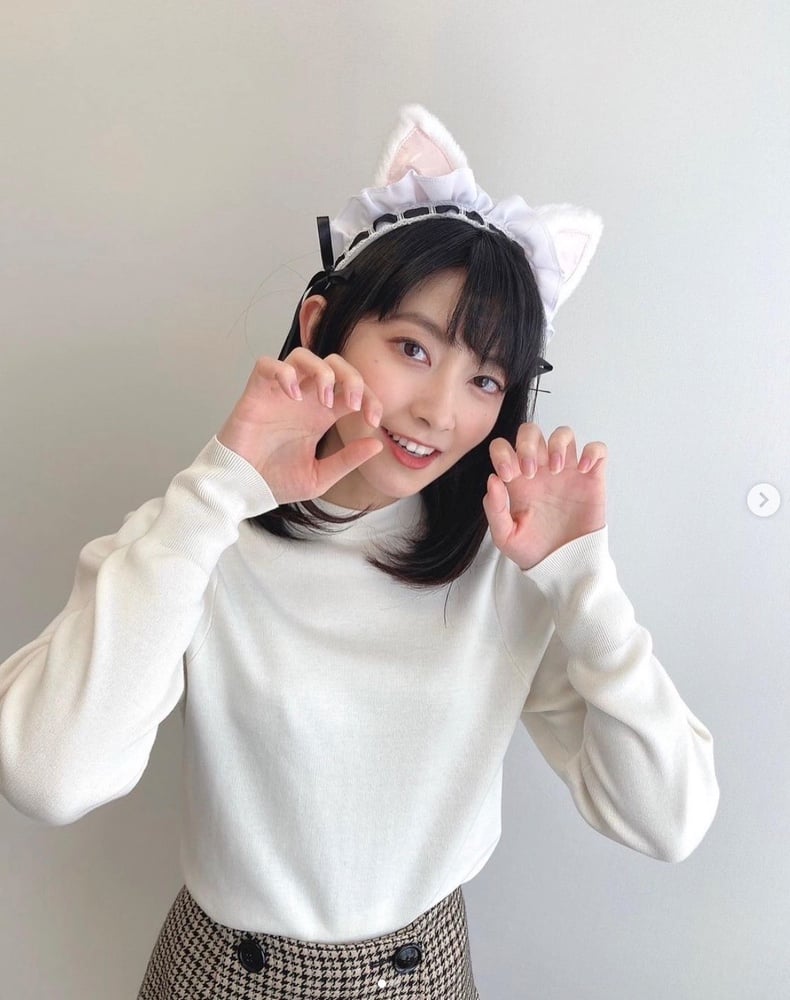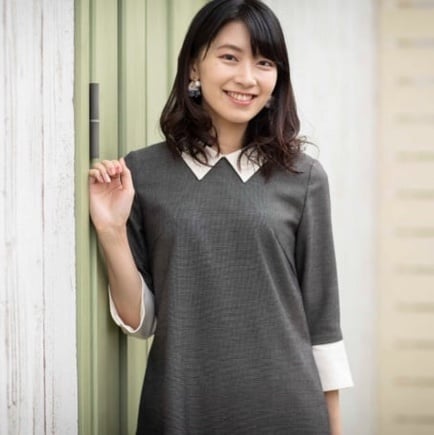If you’re an anime fan, there’s a good chance that you’re also an idol fan. Or at least have enjoyed a few fun idol anime series. In the real world, idol culture can be somewhat less savory than it appears in the stylized world of anime. Let’s look at what happened to Japan’s “weather idol” Saya Hiyama!
Saya Hiyama, Japan’s Weathergirl Idol
What’s the most respected job for women in your country? Lawyer? Doctor? Writer? University professor? In Japan, it’s “announcer,” a blanket term for the highly refined and talented women and men who present world events to everyone on news programs. Announcers are a category unto themselves and possess good educations from high-ranking universities that help them deliver news to viewers in a trustworthy manner. They often speak foreign languages and can interview famous stars or world leaders in fluent English.
Say hello to Saya Hiyama, a “weathercaster” with the Weather News LiVE streaming channel on Youtube, who joined the company after winning an audition in 2018. With her cute speech style and adorable mannerisms, Saya quickly won a place in the hearts of fans all over Japan, who tuned in to watch her report on the weather. Even better, she’s a dyed-in-the-wool otaku and often reports the weather while cosplaying popular anime characters. Fans especially loved the element of 実況 jikkyou, or Nico Douga-esque live commenting on her videos during streaming, which gave them a feeling of togetherness with other fans.
But when Sayacchi (as her fans call her) didn’t appear for a broadcast one day, fans wondered where she was. Then she was spotted in the stands in Wimbledon, sitting in seats reserved for VIP guests of players. Soon it came out that — gasp! — Saya was in a relationship with Japanese tennis star Yoshihito Nishioka. Her fans felt betrayed, and she lost thousands of Twitter followers overnight.
Saya Hiyama, the Princess of Weak Men
What kind of fan would get outraged upon hearing that their favorite weather announcer, a woman of 29 years of age, was dating a man? According to the discussion taking place in Japan right now, it’s the fault of 弱者男性 jakusha dansei, literally “weak men” who lead unfulfilled lives, with their primary source of joy being to obsess over famous personalities like Saya.
We’ve seen this kind of reaction from fans before. When fans found out that voice actress Aki Toyosaki, who voices Yui Hirasawa in K-On!, had a live-in boyfriend, they responded by destroying their anime merchandise on Twitter.
TL;DR: It’s fun to obsess over our favorite idols and pretend they’re our waifus or whatever. But let’s also remember that they’re human beings with feelings, and be happy for them when they find someone to love.
Japanese Love to Label Social Trends
Japanese commentators love to come up with labels for trends in society. Here are some examples:
- Hotaru-zoku or “firefly tribe,” describes men banished from smoking in the house by their wives, who stand alone on the balcony, their cigarettes floating in the air like fireflies.
- Bento danshi describes the trend of men who are more independent and happy to cook and make bento for themselves rather than relying on wives or girlfriends, as past generations might have.
- Soushoku danshi or “herbivore males,” a term that describes men who are less interested in making sexual conquests and more likely to want to stay friends with members of the opposite sex. In response, women who became more aggressive about wanting sex were termed nikushoku joshi or “carnivore females.”
What are the reasons for Japan’s low birth rate? Let’s explore it with memes in this blog post!
- Everyone loves to blame the current generation of young people for society’s ills. One term is “parasite singles,” for irresponsible young people who spend all their money on Chanel bags and trips to Hawaii rather than starting families. Since they’re the only child of their parents and know they can inherit their parents’ house and land, they don’t need to work hard as previous generations have.
- Even terms like yuri and bara started out as this kind of societal labeling, with the terms “lily tribe” and “rose tribe” being coined in response to the new wave of lesbian and gay literature that was emerging from the shadows in the 1970s.

Bottom-Tier Character Tomozaki
We’ve seen this concept explored before, through the Jaku-Chara Tomozaki-kun anime. Tomozaki is a “bottom-tier” boy with zero social skills. He gets taken under the wing of a classmate who teaches him the mechanics of how conversations and social interactions work. It was quite a good anime in that it broke down the elements of human relationships in a way that might be helpful to some viewers.
Thanks for reading this blog post about weathergirl Saya Hiyama and the dark side of online idol culture in Japan. Got any comments on this topic? Tell us in the comments below!
Also, if you’re on social media, follow us on these platforms!
- Twitter, where Peter posts anime booba for you
- Facebook, where we share memes and discuss anime
- Instagram, for fans who want to keep up with J-List products in your Insta timeline
- Discord, if you want to chat with other J-List customers of culture
- Finally, check out J-List’s new short video blogs on YouTube or TikTok!
The summer heat is intense, so why not stay indoors and browse J-List for some cool products from Japan! We’re having a flash Dog Days of Summer sale, giving you $20 off $120 or more on in-stock items shipping from Japan. What cool stuff do you want to pick up today? Start browsing here!




















